-

Circular Economy

Today, the world takes steps to increase the share of reusing and recycling and to promote a circular economy. In a circular economy, materials are utilized efficiently and sustainably, and they remain in circulation for a long time and safely. Products are also shared, leased, repaired, and recycled. Servicification is part of the circular economy, for example, when services replace the ownership of products by paying for their use or results. The circular economy is a new operating method for the economy that produces economic well-being within the limits of the planet’s carrying capacity. It utilizes digitalization efficiently and will renew the structures and operating models of society. The circular economy is a means for reducing the use of natural resources.
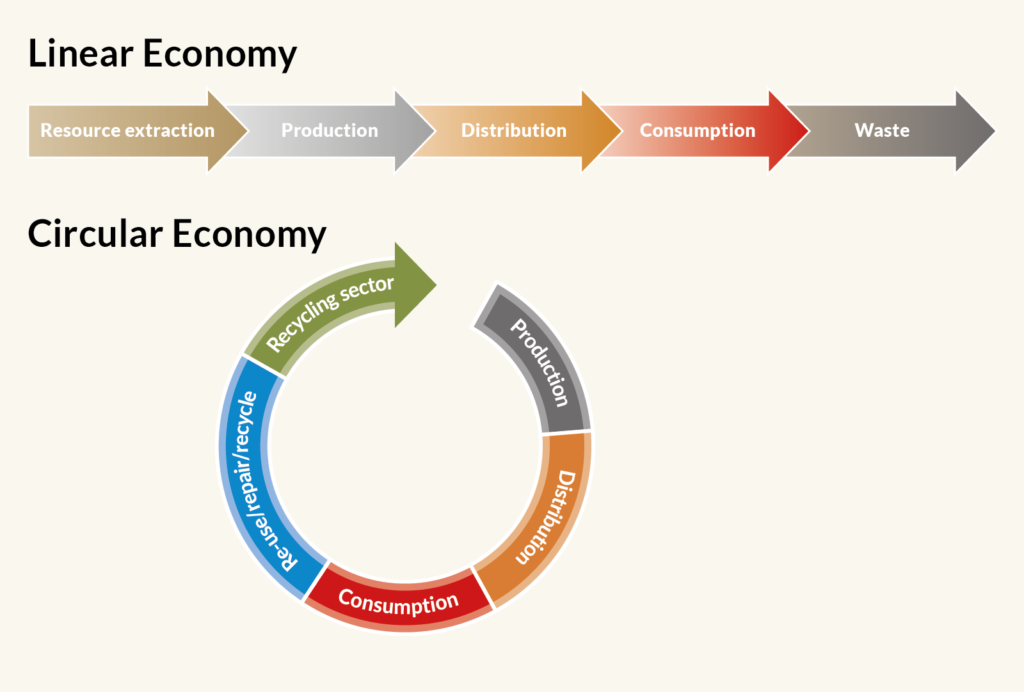
The circular economy will replace the linear economy which is based on material overconsumption and the abandonment of those materials after use (cradle-to-grave design) and it will create a new economical base that fits into earth’s carrying capacity (cradle-to-cradle design). The circular economy aims to reduce the consumption of virgin materials and decrease environmental damage and also to more sustainable consumption of natural resources.
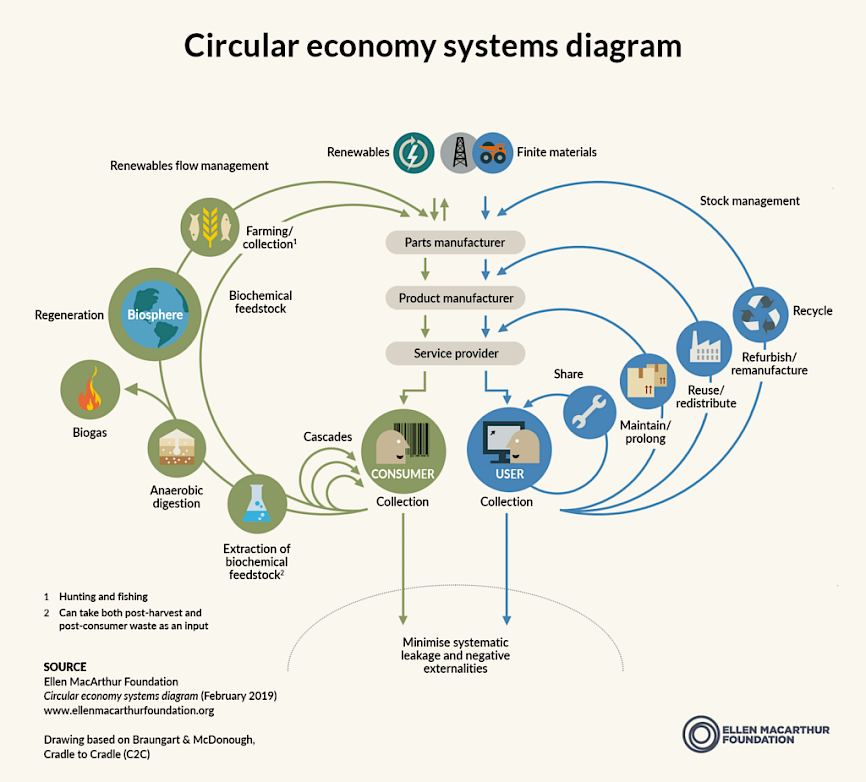
Legislation
The aim of waste legislation is to prevent danger and harm to health and the environment caused by waste and waste management, to reduce the quantity and harmfulness of waste, to promote sustainable use of natural resources, and to ensure well-functioning waste management and prevent littering. Waste legislation follows the development of the EU’s waste legislation, though in some countries waste legislation is even stricter and more wide-ranging than the EU’s regulations. In EU’s Waste Regulatory Package has been prescribed on municipal waste recycling rate which should be 55 percent in the year 2025, 60 percent in 2030, and 65 percent in 2035. The recycling goals for packaging waste have also been defined in the Waste Regulatory Package: 65 percent of all packaging waste has to be recycled by 2025, and 70 percent by 2035.
As an example let’s review what’s happening with Finnish waste legislation and the waste legislation package:
In the Finnish Waste Act (646/2011) it has been prescribed that there is an order of priority considering waste. According to the order of priority, the amount and harmfulness of waste should primarily be reduced. If waste is created, then it should be primarily prepared for reuse or secondarily it should be recycled. If even recycling isn’t possible, the holder of the waste is responsible for utilizing the waste in other ways, including as energy. Only in the case where utilization is not possible, the waste is disposed
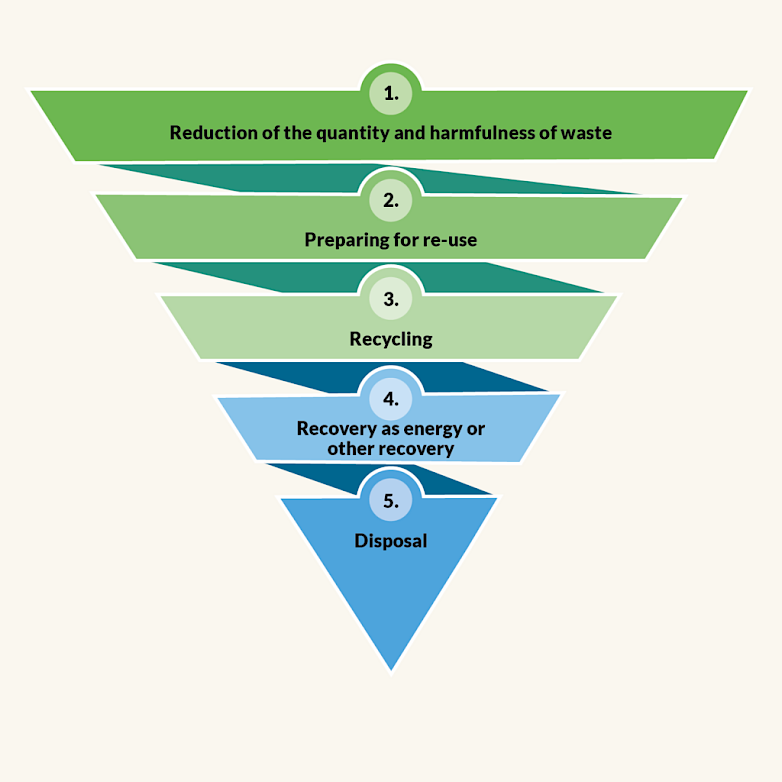
Economic models that closely relate to the Circular Economy
As part of the circular economy operations models, products are also being shared, rented, repaired, and reused, and products are turned into services, in which case the ownership of products can be replaced by paying for the right of use (Source: Kiertotalouden strateginen ohjelma). The sharing Economy is based on the sharing of products and services between people. In Access Economy temporary rights to use products or services are being shared through digital platforms. In Peer-to-Peer/Peer Economy trade between two equals or actors happens without an intermediary. Platform Economy consists of digital and information system-based services that are being used by different actors. (Source: Harmaala ym. 2017.) Thus, there are other economic models that are related to the circular economy.
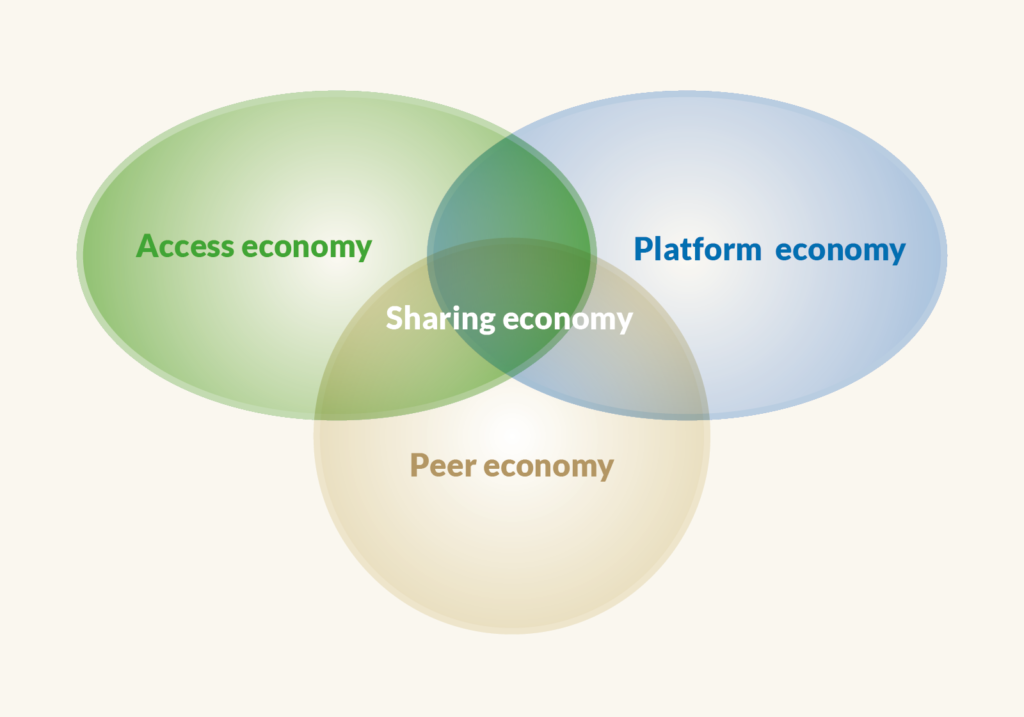
The circular economy is also often connected to concepts of bio-economy, cleantech, and sustainable development. In the Circular Economy, material consumption has been planned to be sustainable, and in which one part is biobased cycles and thus also bio-economy can be seen. Cleantech on the other hand is a solution palette that transects sectors, and in the palette services and products are often being developed by the principles of the circular economy. (Source: Sitra 2016, s. 40)
Circular Economy programs, action plans, and road maps on the EU and national level
The European Commission has adopted the new circular economy action plan in March 2020. It is one of the main steps as part of the European Green Deal, which aims to reach sustainable growth. The new action plan announces initiatives along the whole life cycle of products and targets how products are designed, promotes circular economy processes, and promotes sustainable consumption. It also aims to ensure that waste is prevented and that resources are being kept in the EU’s economy as long as possible. (Source: Circular economy action plan)
More information about the action plan » GO.
In 2021 the Finnish Government made its decision in principle about the strategic program of circular economy, which has a goal of making the circular economy the new base of our economy by 2035. Other aims and visions of the program are i.a. sustainable products and services being mainstream of the economy and sharing economy is mundane; the use of natural resources is sustainable; and innovations, digital solutions, smart regulation, and responsible investors, companies, and consumers have achieved the circular economy breakthrough. (Source: Kiertotalouden strateginen ohjelma)
More information about the strategic program » GO.
The Finnish national road map to a circular economy aims to speed up the shift to a circular economy in Finland in 2016–2025. The road map highlights the best practices and pilots. The focal point measures have been divided into policy measures, key projects, and pilots. The recycling of materials into resources and components and the energy recovery of materials are also seen as parts of the circular economy. In a circular economy, products are designed to be reused and recycled, to begin with. (Source: Sitra 2016.) One significant factor is seeing natural resources as scarce when one of the main measures is getting material into circulation time after time (Source: Sitra).
More information on the road map » GO.
More information on the road map 2.0 » GO.
How to create a national circular economy road map » GO.

Transformation to a circular economy requires cross-sectoral collaboration, resources, and a clear strategy. Road maps are the base of this work. Finnish Innovation Fund Sitra has put together and published an open guide that can be used as a tool for constructing its circular economy road map on a national, municipal, or organizational level. Start your journey to the circular economy today! Access the guide » GO.
Circular economy projects and circular economy in business
Finland has countless circular economy projects, i.e. on legislation and business models. You can find a list of some projects » GO.
Many companies have also shifted towards a circular economy in their business models. Here you can find Finnish company examples on circular economy » GO.
Circular Economy in Construction Sector » GO.
Circular economy business models
Circular economy reshapes the way individuals, communities, cities, and government work and function. More and more, the industry is based on sustainable resources and renewable energy, services instead of ownership, durable products, shared resources, and material reuse. Even companies’ business models reshape. The way the profit used to be made no longer applies.
There are five business models based on the circular economy:
These business models offer new ways to create added value through service and digitalization.
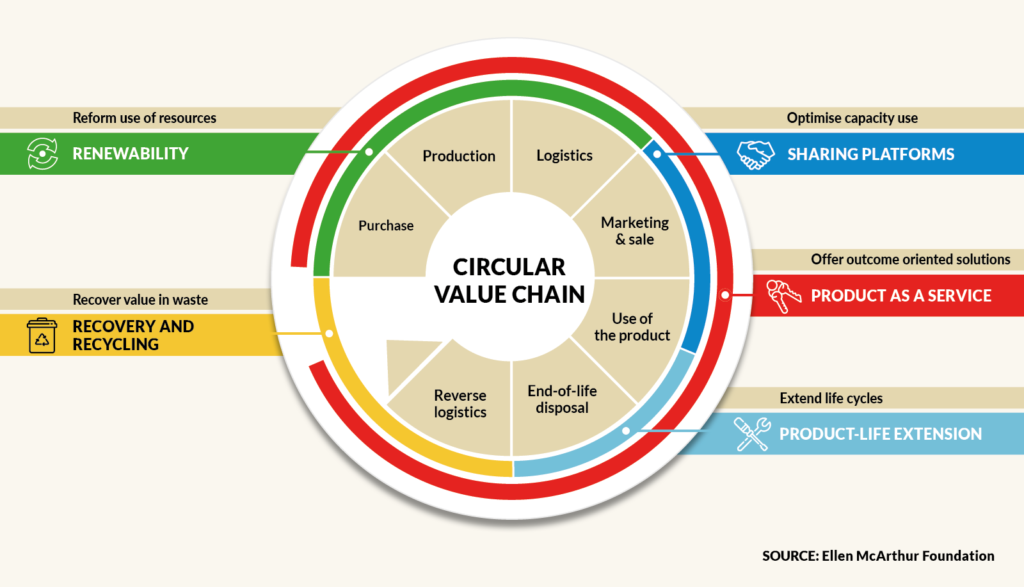
Sources:
We support our client’s through our quoting and project development by providing a wealth of information and specifications about Klean Industries systems and technologies.
©2025 All Rights Reserved. Terms of Use